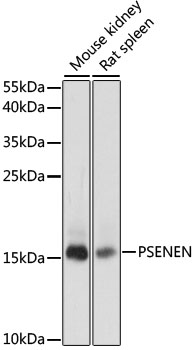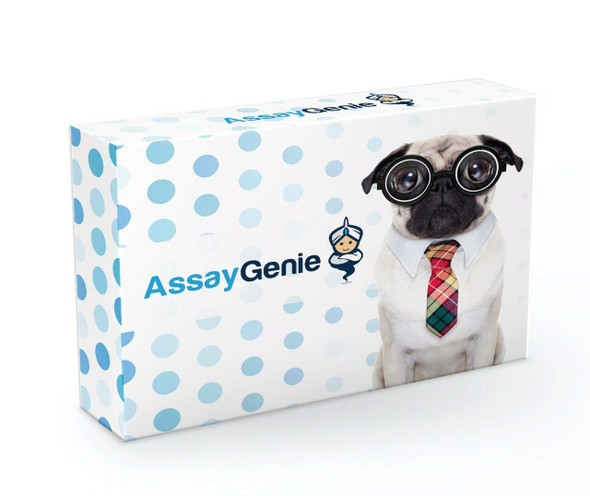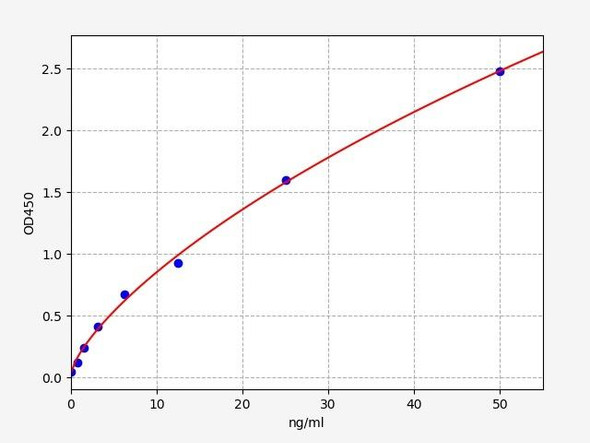Signal Transduction Antibodies 2
Anti-PSENEN Antibody (CAB15172)
- SKU:
- CAB15172
- Product Type:
- Antibody
- Reactivity:
- Human
- Reactivity:
- Mouse
- Reactivity:
- Rat
- Host Species:
- Rabbit
- Isotype:
- IgG
- Antibody Type:
- Polyclonal Antibody
- Research Area:
- Signal Transduction
Description
| Antibody Name: | Anti-PSENEN Antibody |
| Antibody SKU: | CAB15172 |
| Antibody Size: | 20uL, 50uL, 100uL |
| Application: | WB IF |
| Reactivity: | Human, Mouse, Rat |
| Host Species: | Rabbit |
| Immunogen: | A synthetic peptide corresponding to a sequence within amino acids 20 to the C-terminus of human PSENEN (NP_758844.1). |
| Application: | WB IF |
| Recommended Dilution: | WB 1:500 - 1:2000 IF 1:50 - 1:200 |
| Reactivity: | Human, Mouse, Rat |
| Positive Samples: | Mouse kidney, Rat spleen |
| Immunogen: | A synthetic peptide corresponding to a sequence within amino acids 20 to the C-terminus of human PSENEN (NP_758844.1). |
| Purification Method: | Affinity purification |
| Storage Buffer: | Store at -20'C. Avoid freeze / thaw cycles. Buffer: PBS with 0.02% sodium azide, 50% glycerol, pH7.3. |
| Isotype: | IgG |
| Sequence: | LGGF AFLP FLWL VNIF WFFR EAFL VPAY TEQS QIKG YVWR SAVG FLFW VIVL TSWI TIFQ IYRP RWGA LGDY LSFT IPLG TP |
| Gene ID: | 55851 |
| Uniprot: | Q9NZ42 |
| Cellular Location: | Endoplasmic reticulum membrane, Golgi apparatus, Golgi stack membrane, Multi-pass membrane protein |
| Calculated MW: | 12kDa |
| Observed MW: | 16kDa |
| Synonyms: | PSENEN, MDS033, MSTP064, PEN-2, PEN2 |
| Background: | Presenilins, which are components of the gamma-secretase protein complex, are required for intramembranous processing of some type I transmembrane proteins, such as the Notch proteins and the beta-amyloid precursor protein. Signaling by Notch receptors mediates a wide range of developmental cell fates. Processing of the beta-amyloid precursor protein generates neurotoxic amyloid beta peptides, the major component of senile plaques associated with Alzheimer's disease. This gene encodes a protein that is required for Notch pathway signaling, and for the activity and accumulation of gamma-secretase. Mutations resulting in haploinsufficiency for this gene cause familial acne inversa-2 (ACNINV2). Alternative splicing results in multiple transcript variants. |
| UniProt Protein Function: | PSENEN: Essential subunit of the gamma-secretase complex, an endoprotease complex that catalyzes the intramembrane cleavage of integral membrane proteins such as Notch receptors and APP (beta- amyloid precursor protein). Probably represents the last step of maturation of gamma-secretase, facilitating endoproteolysis of presenilin and conferring gamma-secretase activity. Component of the gamma-secretase complex, a complex composed of a presenilin homodimer (PSEN1 or PSEN2), nicastrin (NCSTN), APH1 (APH1A or APH1B) and PSENEN/PEN2. Such minimal complex is sufficient for secretase activity, although other components may exist. Widely expressed. Expressed in leukocytes, lung, placenta, small intestine, liver, kidney, spleen thymus, skeletal muscle, heart and brain. Belongs to the PEN-2 family. |
| UniProt Protein Details: | Protein type:Membrane protein, multi-pass; Membrane protein, integral Chromosomal Location of Human Ortholog: 19q13.12 Cellular Component: Golgi apparatus; endoplasmic reticulum membrane; endoplasmic reticulum; integral to plasma membrane; plasma membrane Molecular Function:protein binding Biological Process: positive regulation of catalytic activity; axon guidance; Notch signaling pathway; amyloid precursor protein catabolic process; membrane protein intracellular domain proteolysis; nerve growth factor receptor signaling pathway; positive regulation of apoptosis; membrane protein ectodomain proteolysis; ephrin receptor signaling pathway; Notch receptor processing; protein processing Disease: Acne Inversa, Familial, 2 |
| NCBI Summary: | Presenilins, which are components of the gamma-secretase protein complex, are required for intramembranous processing of some type I transmembrane proteins, such as the Notch proteins and the beta-amyloid precursor protein. Signaling by Notch receptors mediates a wide range of developmental cell fates. Processing of the beta-amyloid precursor protein generates neurotoxic amyloid beta peptides, the major component of senile plaques associated with Alzheimer's disease. This gene encodes a protein that is required for Notch pathway signaling, and for the activity and accumulation of gamma-secretase. Mutations resulting in haploinsufficiency for this gene cause familial acne inversa-2 (ACNINV2). Alternative splicing results in multiple transcript variants. [provided by RefSeq, Jul 2013] |
| UniProt Code: | Q9NZ42 |
| NCBI GenInfo Identifier: | 28144920 |
| NCBI Gene ID: | 55851 |
| NCBI Accession: | NP_758844 |
| UniProt Related Accession: | Q9NZ42 |
| Molecular Weight: | ~ 12kDa |
| NCBI Full Name: | gamma-secretase subunit PEN-2 |
| NCBI Synonym Full Names: | presenilin enhancer, gamma-secretase subunit |
| NCBI Official Symbol: | PSENEN |
| NCBI Official Synonym Symbols: | PEN2; PEN-2; MDS033; ACNINV2; MSTP064 |
| NCBI Protein Information: | gamma-secretase subunit PEN-2 |
| UniProt Protein Name: | Gamma-secretase subunit PEN-2 |
| UniProt Synonym Protein Names: | Presenilin enhancer protein 2 |
| UniProt Gene Name: | PSENEN |
| UniProt Entry Name: | PEN2_HUMAN |
View AllClose







